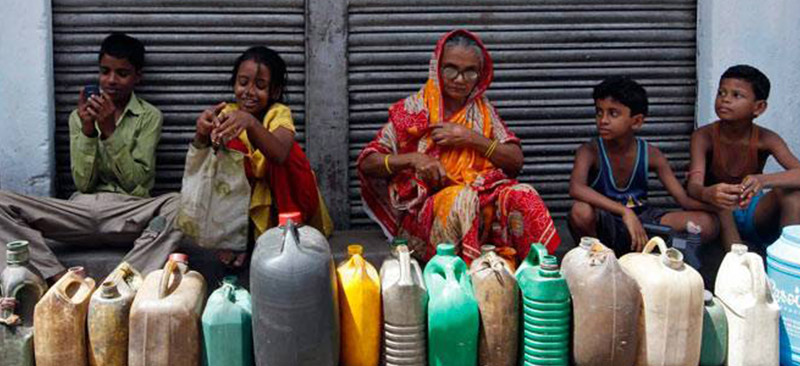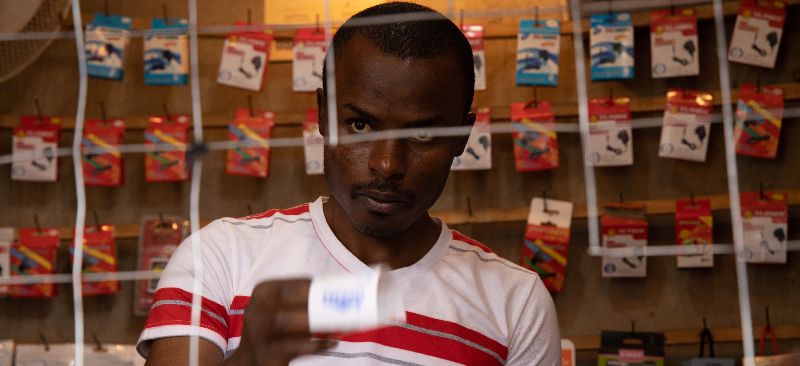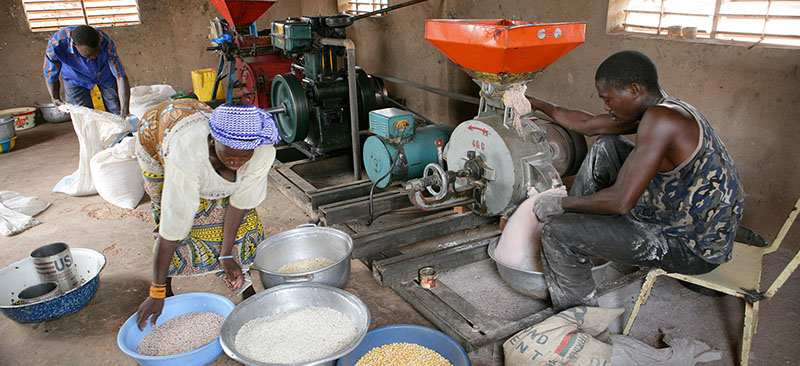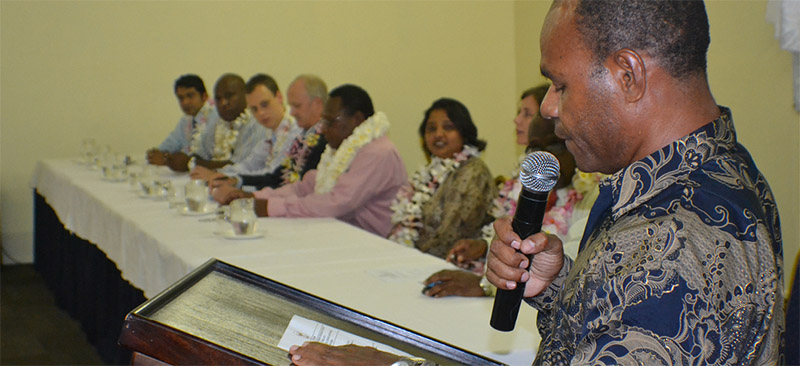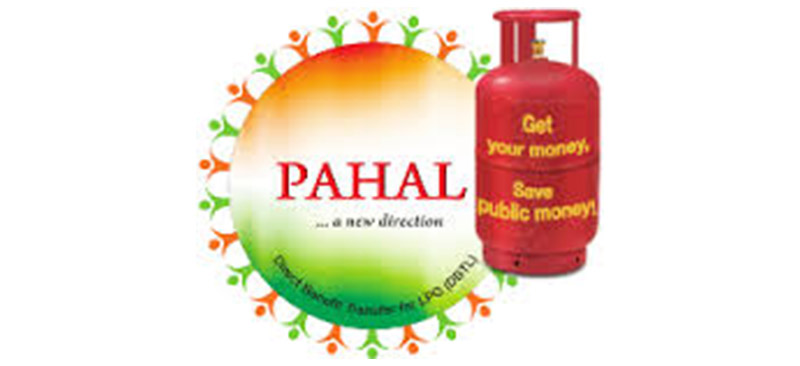India is a social welfare state. Rs. 2,700 billion (US$43 billion) have been allocated for subsidies in FY 2015-16. The enormous scale and the sheer number of people involved in the logistics of ferrying food grains, cooking gas and a host of other commodities across the country leads to “leakages”.To achieve the dual objectives of: i) limiting subsidy outlay through de-duplication; and ii) achieving efficiency in payment transfers, the Government of India announced its ambitious “Direct Benefit Transfer” programme on 1st January 2013. The current government decided to re-launch the programme with slight changes. DBTL in its modified form, called the “Modified DBTL (MDBTL)” – more popularly known as PAHAL, was launched on 15th November 2014. Given MicroSave’s experience in direct benefit transfers, it was a natural outcome that MicroSave was the partner of the Ministry of Petroleum and Natural Gas (M0PNG) as the latter re-launched and rolled-out MDBTL. Basis huge success of PAHAL, the government has a template that it is eager to replicate. We hope, and expect to see the successful roll out of DBT for other G2P programmes.
Blog
Agent Network Accelerator Survey: Tanzania Country Report 2015
The first wave of Tanzania’s Country Report was based on a national representative sample of over 2,000 mobile money agent surveys and was carried out in 2013 all over the country. The report painted a picture of a dynamic and competitive mobile money market in Tanzania with profitable agents, focusing on the country’s operational factors of success and persistent challenges.
2 years later, Tanzania’s market has become increasingly competitive, as Tigo and Airtel are catching up with the market leader Vodacom, in terms of market presence. Tanzania is witnessing a steady, progressive evolution of the market with increased self-initiated customer transactions. While this has led to a decrease in transactions at the agent level, it represents an opportunity for providers to design products to enhance the trend. More agents are non-exclusive and non-dedicated compared to 2013, which is necessary and desirable. Providers will want to maintain agent profitability and ensure that agent network growth does not outpace customer growth.
To learn more, download and report the report in full.
Thoughts on DFS in “Europe Minus Infrastructure” – DRC!
“Europe minus infrastructure”? This was the term that James Mwangi, CEO of Equity Group, used in an Equity Group briefing when describing and explaining Equity Banks’ move into DRC by purchasing ProCredit Bank Congo.
I have been thinking about which country might be the following some of the leading digital financial services (DFS) countries like Tanzania, Uganda, Zimbabwe, or Somalia, to offer transactions via nation-wide agent networks and thus provide financial services to hitherto unbanked populations. For me, it is the Democratic Republic of Congo (DRC). In the DRC it is a matter of survival for many financial institutions. In a country 80 times bigger than Belgium, with 35 people per sq km, you either go for DFS, or you can leave the playing field all together.
With a population of around 67million and the country covering an area as large as Europe, the DRC clearly requires a DFS model. The population is growing at quickly and will probably reach 100 million in 2025. And only 4% of the Congolese population currently has access to financial services – from no less than 20 banks. Competition is harsh between these financial institutions, and the one discovering a real comparative advantage (DFS could be one) will be the one to win. At the same time, the country’s GDP is growing at 9% annually (as much as one can trust these numbers). Mobile network coverage is estimated to reach 50 to 60% of the population already and the country had around 22million subscribers by Q1 2014.
Evidently there are also big challenges. Infrastructure is definitely one and might even be the biggest: only 5% of roads are paved, many branches depend on generators, etc. Many banks have used the infrastructure-excuse to explain not developing a branch network – particularly in the east of the country. The infrastructure challenge also comprises the missing payment system: inter-bank reconciliation and compensation is still performed manually every evening at the Central Bank. In addition, DRC ranks as 154 on the Transparency International Corruption Index out of 175 countries. Not an easy nut to crack!
The challenges continue when looking at the client profile: A bank will have to deliver financial services to people speaking 4 languages and with a literacy rate of 61.2% (2008-2012, UNICEF). Furthermore, providers will probably struggle to replicate the usual anchor products/value propositions from other markets. National money transfer companies, such as Amis Fideles, already offer affordable prices and, in the short run at least, people might not switch to mobile transfers. The utility companies, (i.e. electricity and water), are fairly badly managed and the MIS (often excel!) cannot interface with any bill payment platform. (At least when we tried to offer bill payments as ProCredit this was considered to be a utopic idea). The unreliable GSM network described in the GSMA on the DRC report is clearly also a major risk for a DFS market – as it will directly influence both feasibility and customer trust.
However, the different actors are clearly getting their ducks in a row:
– In December 2011, the central bank has released a new regulatory framework on electronic money allowing non-bank e-money issuers to offer financial services. A few months later, four mobile operators received licenses and three launched their operations.
– The Central Bank has granted a waiver for agent network development to FINCA DRC and is learning from that experience. The banking agent regulation was promised to be launched soon.
– FINCA DRC is already very successfully developing a rapidly growing agent network.
– Procredit Bank Congo has launched their “L’AR Phone” service with which one can transfer between accounts at Procredit Bank.
– TMB Bank launched a mobile banking service called “Pepele mobile” which is compatible with all kinds of phones (i.e. IVR, SMS, app) and also supports cash-in and cash-out transactions.
– Other commercial banks are already preparing to also get a license to launch agent networks.
– Already 700,000 state employees are being paid by bank transfer. There have been numerous issues around these payments, and when I was still in DRC, the Ministry refused to pay people via transfers since the people doing the cash handouts would lose their job (no kidding!) and since electronic transfers would shed light on around 30% of government officials receiving salaries without actually having a job with a Ministry. But these issues seem to have been resolved – progress!
Having spent 3 years in Kinshasa with Procredit Bank Congo, I clearly see that the country offers some of the ingredients for rapid progress towards DFS in the near future. As the GSMA report on the DRC points out, mobile banking might have more success in the DRC than the usual bill payment or national transfer strategies. And hopefully with the arrival of Equity Bank, financial service providers will have to wake up under the pressure of competition. Furthermore, Equity Bank comes with a wealth of experience, not only with difficult markets (including Southern Sudan), but also in developing a strong banking agent channel with today 14,000 active agents (30-day basis). In DRC, Equity will benefit from its existing partnership with Airtel, the largest MNO in DRC (market share: 28.4%). In addition, Helios Investment Partners, a shareholder of Equity holds a participation in the MNO towers in the DRC.
So there are great opportunities – and many, many challenges! However let’s look back in a year’s time and hopefully we will be able to see a real acceleration of DFS uptake and many more people will be banked. For those interested in more information on mobile banking and mobile money in the DRC, please have a look at the GSMA report “Enabling mobile money policies in the Democratic Republic of Congo“.
 Source: GSMA
Source: GSMA
Building MIS Capacity for Social Performance Reporting
Alalay sa Kaunlaran, Inc. (ASKI), a Philippine microfinance institution (MFI) and staunch advocate of Social Performance Management, embarked on a project ‘Towards SPM Excellence’ with Opportunity International Australia and MicroSave to strengthen its capacity to use social performance information in decision making and thereby intensify its accountability to the mission. In 2014, ASKI received technical assistance and embarked on translating its mission and social goals into social objectives with a set of SP indicators and targets.
This Briefing Note describes the processes that ASKI followed to determine MIS requirements and the initial steps that were taken in 2014 to improve the MIS so that Social Performance reporting was brought into balance with Financial Performance reporting. This BN describes the way in which ASKI arrived at which indicators to track, the frequency of reporting and the co-ordination / role which the departments played so as to report using a Social Performance Dashboard.
Using “Behavioural Sciences” to Make Consumers “Give It Up” – The Case of LPG Subsidy
“The Government of India’s Modified Direct Benefit Transfer (MDBTL) scheme for liquefied petroleum gas (LPG), more popularly known as Pahal, has achieved remarkable success. However, it has not replicated this success, with the ‘Give It Up’ campaign. Despite the fact that the campaign has been running for several months, www.mylpg.in shows that around 1,000,000 LPG customers, or 0.8 per cent of LPG connections, have given up their subsidies as on July 21, 2015. There are clearly huge potential gains for the government, if they are able to motivate customers to give up their LPG subsidies. This, though, requires sincere efforts in terms of communication and process modifications. However, looking at the potential savings these efforts are worthwhile!
Reinforcing the Role of the Board in Social Performance Management
Alalay sa Kaunlaran, Inc. (ASKI), a Philippine microfinance institution (MFI) and staunch advocate of Social Performance Management, embarked on a project ‘Towards SPM Excellence’ with Opportunity International Australia and MicroSave to strengthen its capacity to use social performance information in decision making and thereby intensify its accountability to the mission. In 2014, ASKI received technical assistance and embarked on translating its mission and social goals into social objectives with a set of SP indicators and targets.
This second Briefing Note from this project describes the work done with the Board at ASKI. (please read the first BN here – http://bit.ly/1IQKCcE)
Having a Board that is committed to the social mission facilitates the implementation of SPM at all levels of the organization. While few MFIs have benefited from a Board-driven social agenda, it is extremely important to convince the Board members of the value of SPM in order to yield its full potential. Even if we agree with the fact that Board members come with a diverse rich background in their respective fields, Social Performance Management (SPM) can be new to many. Hence it is imperative on the part of the MFI to introduce their Board members to the concepts and importance of SPM.
The Board needs have a clear idea of key things such as:
• Its mandate and role in the SPM process?
• How to read social data and use it in decision making?
• How can the MFI’s leadership coordinate the SPM process?
This BN speaks of how ASKI brought their Board on board!
